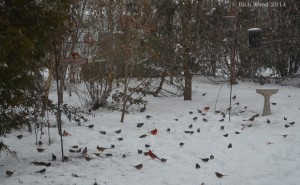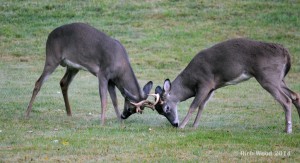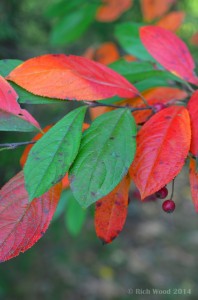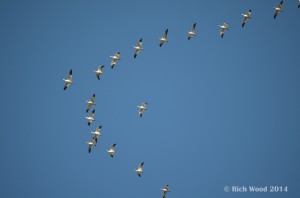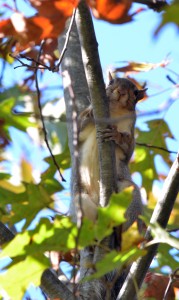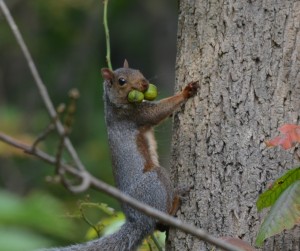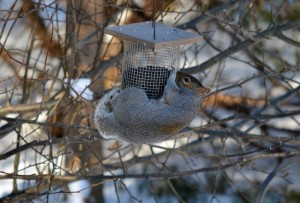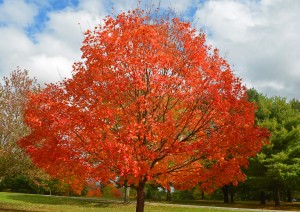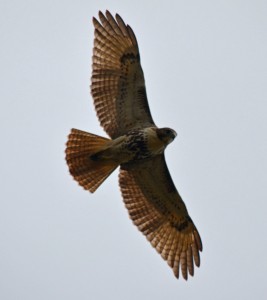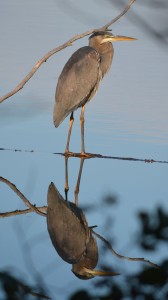It was a chilly, spring morning when we arrived in the tiny hamlet nestled in the west-central Adirondacks. The morning air was cold, but exceedingly fresh. It was the kind of morning that you knew the calendar read spring, but seeing your breath and feeling the biting cold at your fingers, suggested that winter was still trying to hang on just a bit longer. I was visiting the area with my dad (Pa), to do some birding, photography and, hopefully, discover a few Smallmouth bass hiding in one of the many lakes that dot the region.
As we pulled into a small store to grab a quick cup of coffee, and a snack, I glanced at my watch. It was 6:20 am and the sun was just rising over the steep, forested mountain to the east. I grabbed a couple bucks from my pocket, laid them on the counter, and said “Good morning” to the cheery-looking man standing behind the cash register who was bundled up in an old, worn Woolrich jacket. “Morning,” he replied, looking over his reading glasses. “Would you happen to know how we can get to Hidden Lake?” I asked politely. “Yep, just take the first left you come to. It’s up there about 5 miles as the crow flies,” he said, as he counted out my change.

Clutching our coffee cups we loaded into ‘big blue” and zoomed down the two-lane, country road. I repeated to myself, “about 5 miles as the crow flies.” Really? Have you ever watched a crow fly? They zig-zag, slowly dip and dive, stop to harass any unsuspecting hawk or owl, then change course just to scrape up the last remaining parts of a road-killed rabbit or squirrel. In my opinion, if I were to go “as the crow flies,” we may be driving for 20 miles or more! As I rambled on to Pa about the directions we received, and how I compulsively needed to Google the origin of the phrase on my cell phone, he pointed to three crows flapping over the low-growing spruce trees just in front of us. “There’s your GPS, now just follow them,” he announced, sipping his coffee while holding back his laughter.
After directing the truck over 10 miles of a bouncy, gravel road, we were yet to find Hidden Lake. Yes, I know what you’re thinking. Why do you think they named it what they did? We did manage to spot some early warblers, a Ruffed grouse, and a shy Swainson’s thrush, but still no crows and no lake. We turned the vehicle around, and headed back to our cottage. Hidden Lake would remain hidden!
I had to Google this, or even tap Wikipedia if I must. I then discovered our historical ignorance. The origin of this saying was from early British sailors who would keep a few crows in cages, on board their ships. Because crows supposedly avoided water, they would fly straight toward land when released from their crates, thus directing the sailors to the nearest land. In addition, since they kept the black birds in cages, it’s also where the term “crow’s nest” came from as well. That was our problem! We were going about this backwards. If history was correct and crows did not like water, the birds we saw earlier in the morning were leading us away from Hidden Lake, not toward it!

We returned to the cottage as the sun began to settle in the western sky. Although it wasn’t the body of water we were seeking earlier in the day, our rented cabin was only a short walk from another small lake, that also supplied a comfortable canoe that was tied up to an old wooden dock. As we began to paddle across the over-sized pond, two beautiful Common loons surfaced about 100 yards away and began calling their eerie, calls. Pa and I gently laid down the paddles and sat quietly for a few minutes, neither of us saying a word, but just listening as the calls echoed from shoreline to shoreline. The silence was broken when Pa grabbed his paddle and suggested we target a few trees that had fallen into the water on the far side to cast our lures. “How far do you think it is over to that side?” Pa asked innocently. I paused, then replied, “About a ½ mile as the crow flies!” We both laughed and continued on our mini-adventure.



